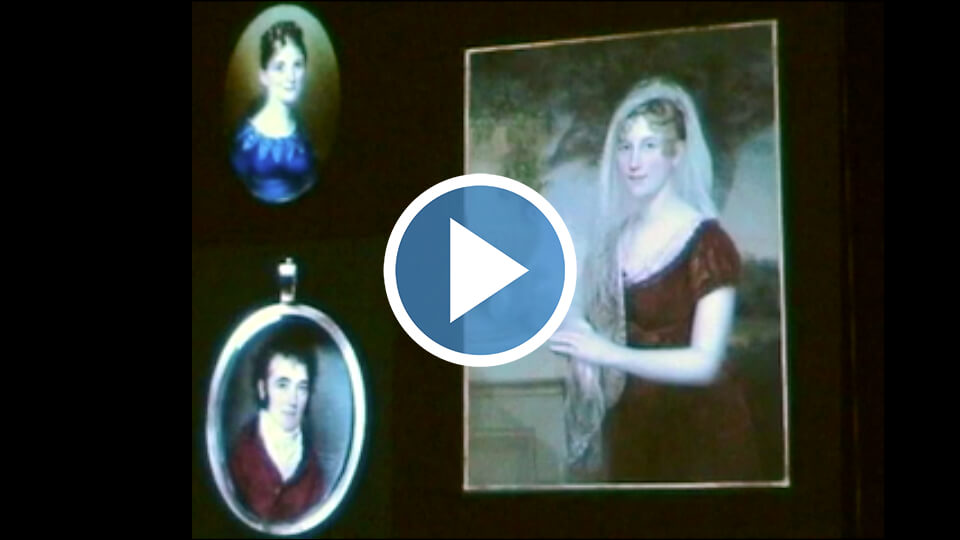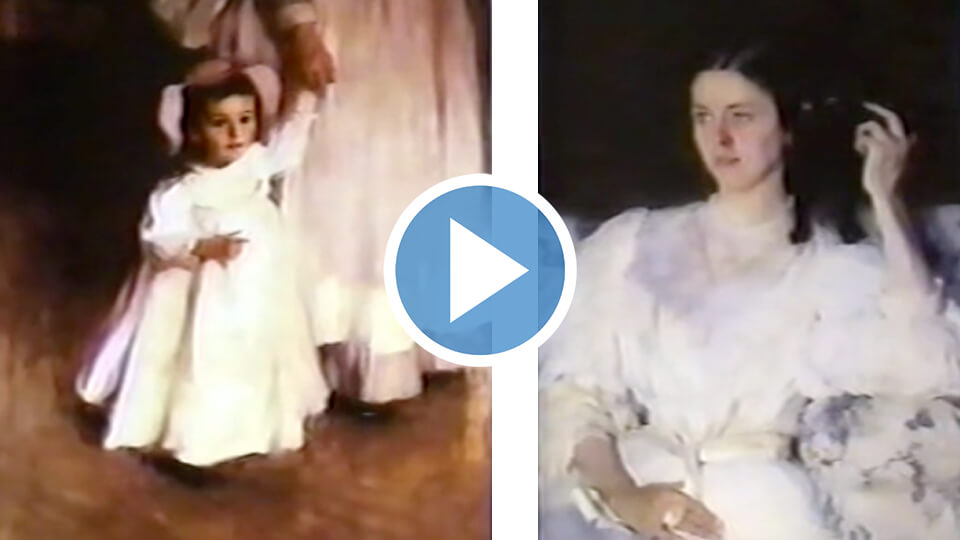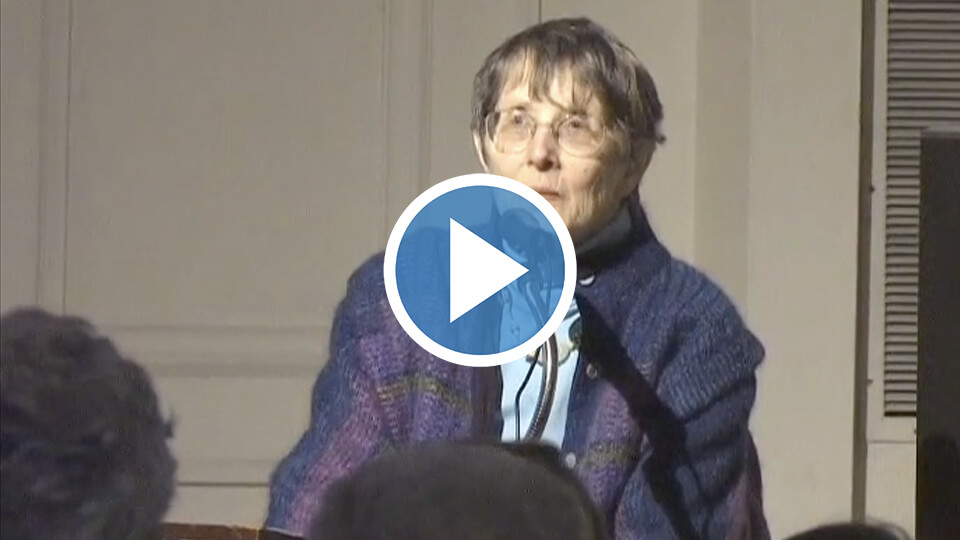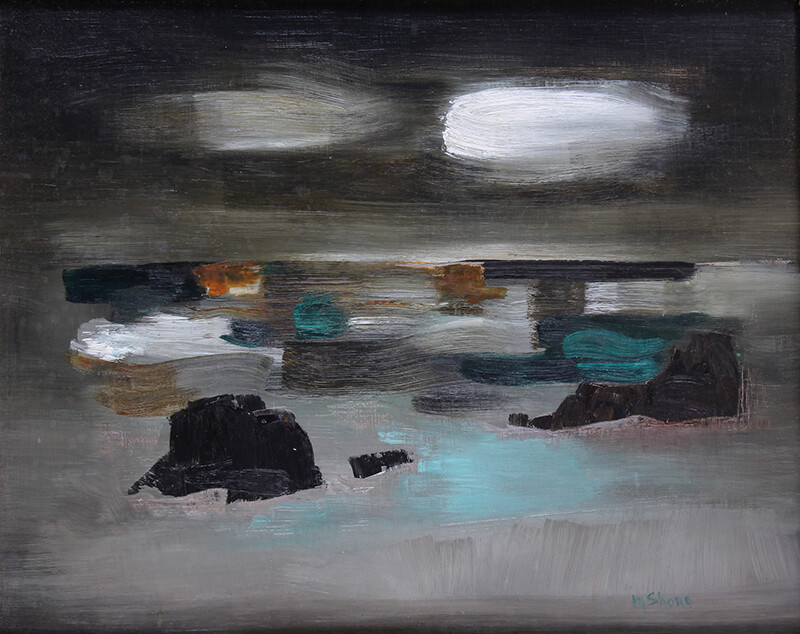
Mary Shore (1912-2000). The Sullen Sea, Undated. Oil on Masonite. Gift of Brian Shore, 2001 [#2001.39.2]
Women of Cape Ann
Throughout its history, Cape Ann has been no stranger to great women, and their greatness can be defined in many ways. This week’s featured videos from the Cape Ann Museum Video Vault offer the opportunity to hear more about women in our area whose contributions have benefitted the arts, industry, and their surrounding communities. The following selections feature some names that are familiar and others that are less well-known, but all of these women demonstrate tenacity and dedication to following their inner spirit regardless of the circumstances in order to live their lives to the fullest.
In addition to the individual video links below, the entire selection of lectures in the Video Vault can be accessed here, while finding aids and transcripts for them are available here. ■
Sisters of the Brush:
Women Artists in 19th Century America
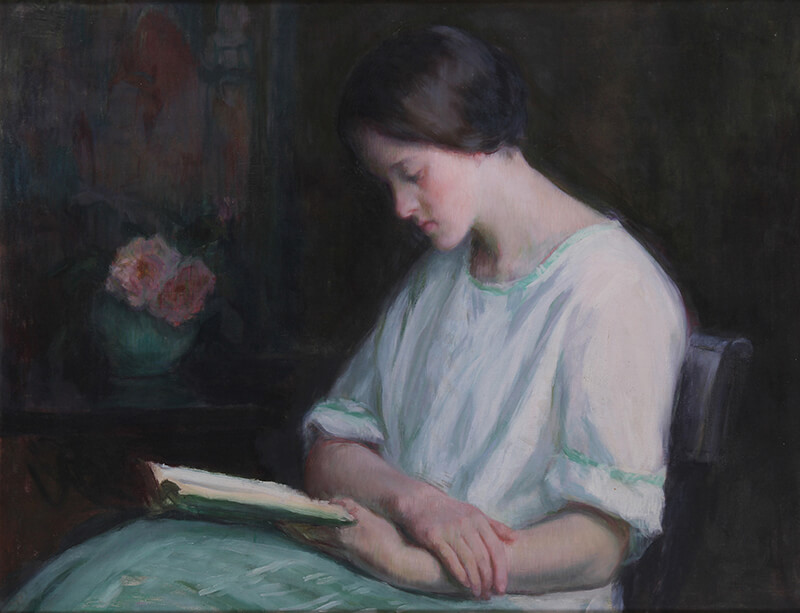
Ellen Day Hale (1855-1940). Portrait of Vera Cheves, c.1925. Oil on canvas. Gift of Vera L. Cheves, 1996 [#1996.57.1]
As the title suggests, this 2008 lecture by Erica Hirshler, Croll Senior Curator of American Paintings at the Museum of Fine Arts, Boston, chronicles notable 19th century female American artists, many of whom spent time on Cape Ann. Despite working in a field dominated by men and living in a time when societal norms were less than encouraging, these women persevered and practiced their art.
Some of these artists may already be familiar, such as writer and painter Cecilia Beaux (1855-1942), who first visited Gloucester in the 1880s (learn more here). However, other names may be less recognizable, such as Susannah Paine (1792-1862), an early American itinerant portraitist who worked on Cape Ann in the 1830s and 1840s (more info here).
As Hirshler notes, information about women artists from this period is somewhat limited because they were not evaluated and collected in the same way as their male contemporaries. For example, female artists tended to be criticized if they didn’t demonstrate strength in their artwork, yet at the same time they were undermined if they strayed from what was considered appropriately reticent feminine behavior. Imagining the effort it took to be creative in those circumstances can foster even greater appreciation for their accomplishments. ■
Drawn to the Light:
Women Artists of Cape Ann, 1900-1950
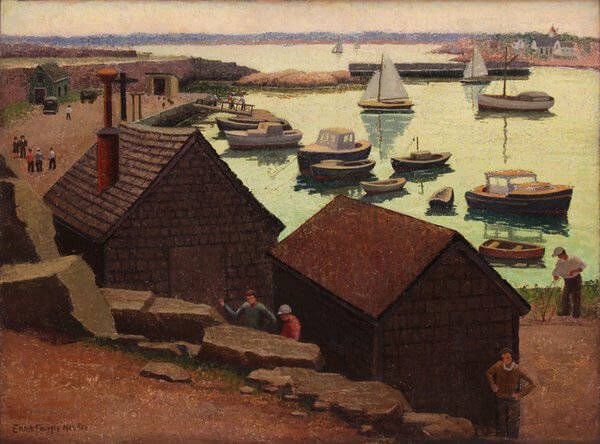
Emma Fordyce Macrae (1887-1974). Pigeon Cove, c. 1930s. Oil on burlap mounted on board. Gift of Jennifer Kissel, 2006 [Acc. # 2006.35]
An authority on American
art, Boston MFA Curatorial Research Associate Janet Comey turns her attention
towards a selection of female painters who had ties to Cape Ann during the 19th and early 20th centuries with this lecture from 2008. Comey relates that during this time frame, female
artists were beginning to gain increased recognition, and many were drawn to
the Cape Ann area because they found the camaraderie and support among artists there
more welcoming than that of other major metropolitan areas such as New York or Philadelphia.
Comey’s presentation features eight artists, and her commentary paints a lively picture of these women’s personalities and artistic achievements. As she explains, some female artists have become better known in part thanks to institutions, such as the Cape Ann Museum, that have made a concerted effort to re-look at female artists from the past. For more information about works by these and other women artists in the Cape Ann Museum’s collection, here is a gallery guide from a 2009-10 survey exhibition on this very topic. ■
Women Workers at Mighty Mac with John Ronan

Mighty Mac workers, ca. 1970. From the Barbara Erkkila Collection of the Cape Ann Museum Library & Archives. Gift of Barbara Erkkila, 1999 [Acc. # 1999.24]
Of course, women on Cape Ann have excelled in other areas besides the arts. And sometimes, achieving greatness means more than attaining name recognition status, as this video that features Gerolama “Gerri” Lovasco (1924-2017), the daughter of Italian immigrants, very aptly demonstrates. Working as a stitcher at Mighty Mac Out O’ Gloucester in the 1940s and 1950s, Gerri represents a long line of Cape Ann women whose hard work has meant prosperity for local businesses through the years.
But Gerri doesn't just talk about work at Mighty Mac— she also speaks about marrying, raising a family, and cherishing her friends, all while conveying an air of sincere modesty when asked by John Ronan to speak publicly about these accomplishments. No doubt, greatness comes in small packages, as Gerri’s small stature might appear to belie her tenacity. And for anyone who remembers Gloucester in the mid-1900s, as well as those to whom that time period is less familiar, Gerri’s stories of everyday life will be as entertaining as they are remarkable. To read about women working on Cape Ann, click here. And for more on Mighty Mac, view their extensive archival collection held by CAM. ■
The Girl I Left Behind Me
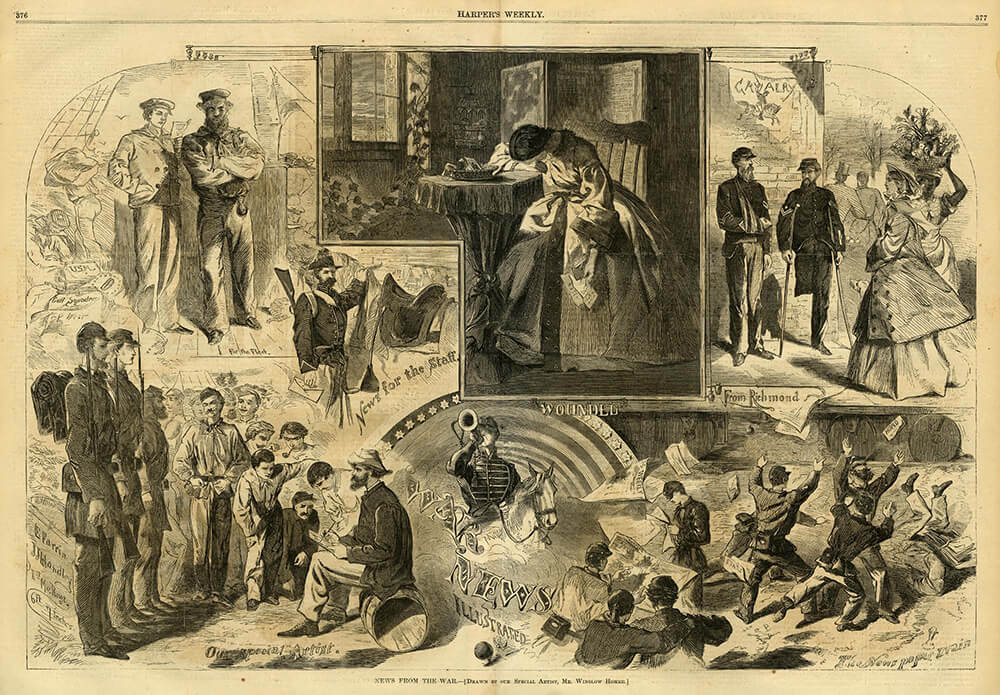
Winslow Homer, News from the War, from Harper’s Weekly, June 14, 1862. Wood engraving on paper. From the Collection of the Cape Ann Musem Library & Archives. Gift of Mary and Henry McCarl, July 2011 [2011.033].
This video highlights the everyday
contributions made by women during the Civil War and features illustrations from
that period by Winslow Homer that were published in Harper’s Weekly.
However, the speaker in this lecture, Mary Rhinelander McCarl, is equally
worthy of attention. A dedicated volunteer at the Cape Ann Museum for decades, she
came across the topic for this lecture during her work in the Museum archives
and it is one of several independently researched subjects that she has spoken publicly
about over the years.
Interspersed with the live performance of popular Civil War era tunes, McCarl reads excerpts from local news articles and correspondence that capture the tenor of life on Cape Ann during this time, as even though the city was far removed from the battlegrounds, it was still deeply affected by the war. And if you’ve ever wanted to hear “When Johnny Comes Marching Home” or “Hard Tack, Come Again No More” played on a tin whistle, here’s your chance! ■
Unsubscribe | Forward | View in browser
CAPE ANN MUSEUM
27 Pleasant Street, Gloucester, MA 01930
Cape Ann is one of the most important places in the history of American art and industry.
The Cape Ann Museum, thanks to supporters like you, celebrates the history and remarkable contributions of this place to the cultural enhancement of our community and the world at large - yesterday, today and tomorro


